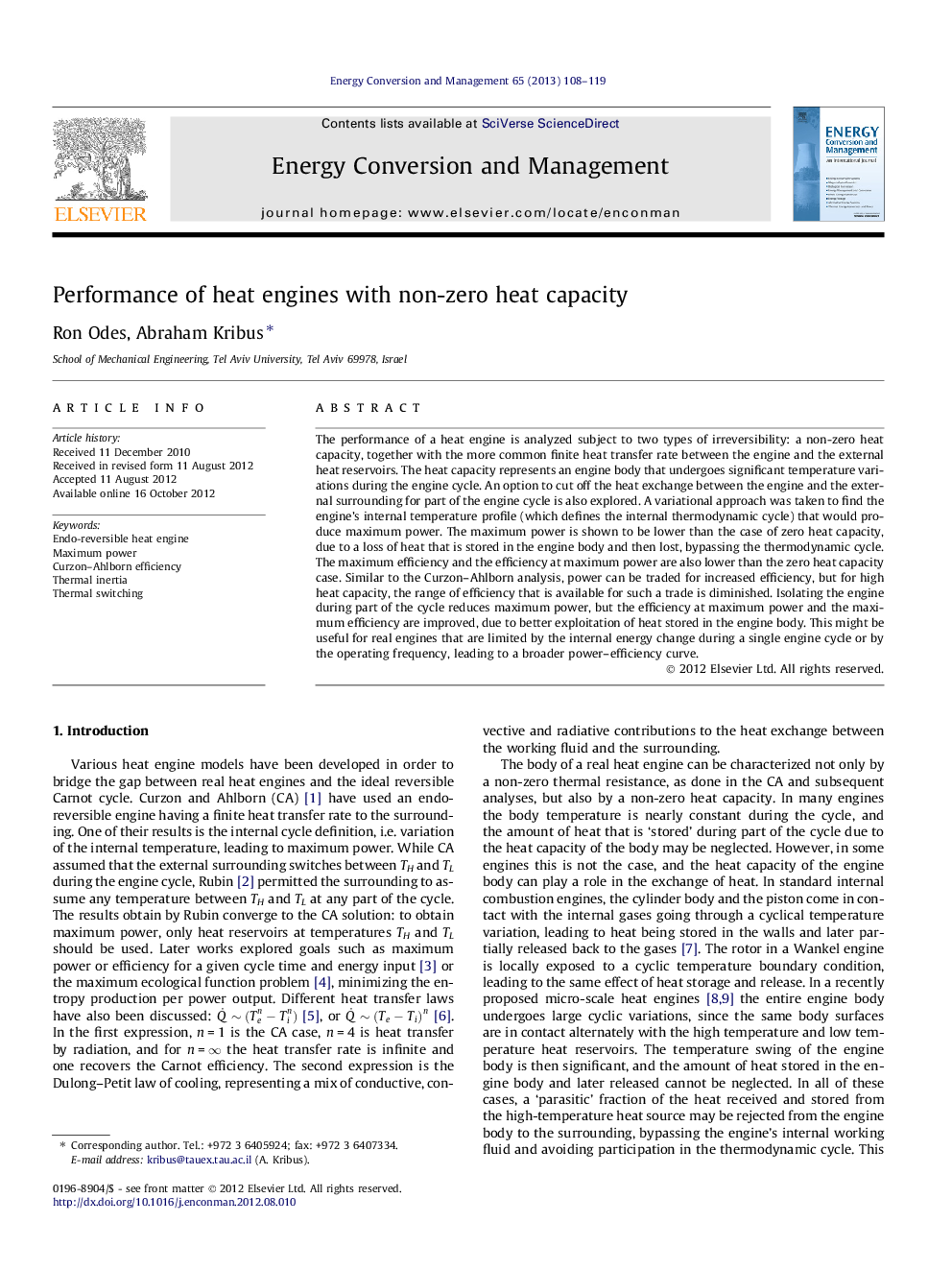| کد مقاله | کد نشریه | سال انتشار | مقاله انگلیسی | نسخه تمام متن |
|---|---|---|---|---|
| 760999 | 1462897 | 2013 | 12 صفحه PDF | دانلود رایگان |

The performance of a heat engine is analyzed subject to two types of irreversibility: a non-zero heat capacity, together with the more common finite heat transfer rate between the engine and the external heat reservoirs. The heat capacity represents an engine body that undergoes significant temperature variations during the engine cycle. An option to cut off the heat exchange between the engine and the external surrounding for part of the engine cycle is also explored. A variational approach was taken to find the engine’s internal temperature profile (which defines the internal thermodynamic cycle) that would produce maximum power. The maximum power is shown to be lower than the case of zero heat capacity, due to a loss of heat that is stored in the engine body and then lost, bypassing the thermodynamic cycle. The maximum efficiency and the efficiency at maximum power are also lower than the zero heat capacity case. Similar to the Curzon–Ahlborn analysis, power can be traded for increased efficiency, but for high heat capacity, the range of efficiency that is available for such a trade is diminished. Isolating the engine during part of the cycle reduces maximum power, but the efficiency at maximum power and the maximum efficiency are improved, due to better exploitation of heat stored in the engine body. This might be useful for real engines that are limited by the internal energy change during a single engine cycle or by the operating frequency, leading to a broader power–efficiency curve.
Figure optionsDownload as PowerPoint slideHighlights
► Finite heat capacity is a second irreversibility mechanism in addition to thermal resistance.
► Heat capacity introduces thermal transients and reverse heat flow.
► Engine maximum power and efficiency are lower for finite heat capacity.
► Implementing the optimal engine cycle requires active control.
Journal: Energy Conversion and Management - Volume 65, January 2013, Pages 108–119